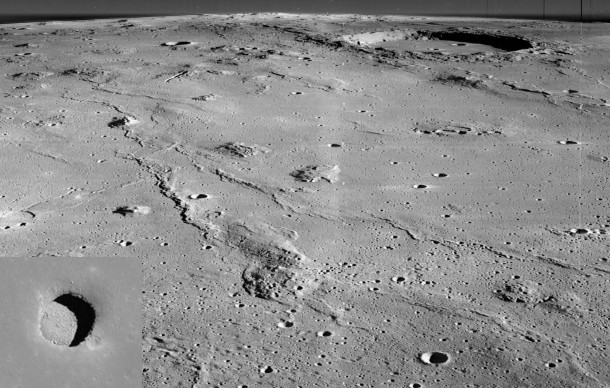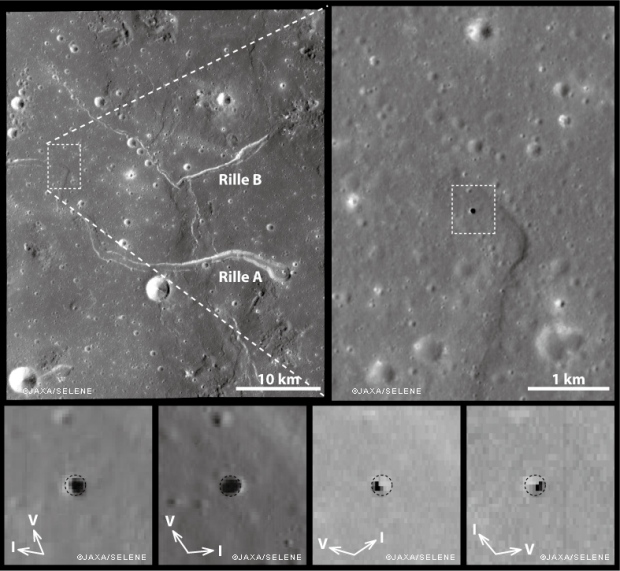
A Study Reveals That Moon Caves Could Be Home To Future Astronauts
Had you ever thought of living on Moon? Could humans live on or beneath the surface of the Moon?
The new study, it suggests that a 50-kilometre long lava tube lies below a hole at Marius Hills on the moon. This would make an ideal place not only for further studying the history of the moon, but it could also provide the site for a home with ample protection for future astronauts. And there are much more possible sites.

This intriguing possibility was bolstered in 2009 when Japan’s Moon-orbiting SELENE spacecraft imaged a curious hole in the Marius Hills region on the Moon, possibly a skylight to an underground lava tube. Follow-up observations by NASA’s Lunar Reconnaissance Orbiter (LRO) indicated that the Marius Hills Hole (MHH) visually extends down nearly 100 meters and is several hundred meters wide.
Humanity may once again find itself living in caves after a new study out of Japan found evidence that the moon is home to caves and possibly tubes cut out from lava, which could protect future astronauts from harmful space radiation. Human bodies weren’t made for space. We have evolved under the protection of our magnetic field, which keeps dangerous cosmic radiation from reaching us.

Most recently, ground penetrating radar data from SELENE has been re-analyzed to reveal a series of intriguing second echoes indicators that the extensive lava tubes exist under Marius Hills might extend down even kilometers and be large enough to house cities. Such tubes could shelter a future Moon colony from large temperature swings, micro-meteor impacts, and harmful solar radiation.
However, we are entering a space-faring age, with missions to Mars and the moon announced by both NASA and SpaceX. Aside from the technological challenges faced with such goals is the challenge of protecting our fragile bodies from radiation. One way we could do that is by using a planet or the moon as a shield against that radiation.
Potentially, underground lava tubes might even be sealed to contain breathable air. These lava tubes likely formed when lunar volcanos were active billions of years ago. Pictured, the surface of Marius Hills region was captured in the 1960s by NASA’s Lunar Orbiter 2 mission, while an inset image of the MHH is shown from NASA’s continuing LRO.